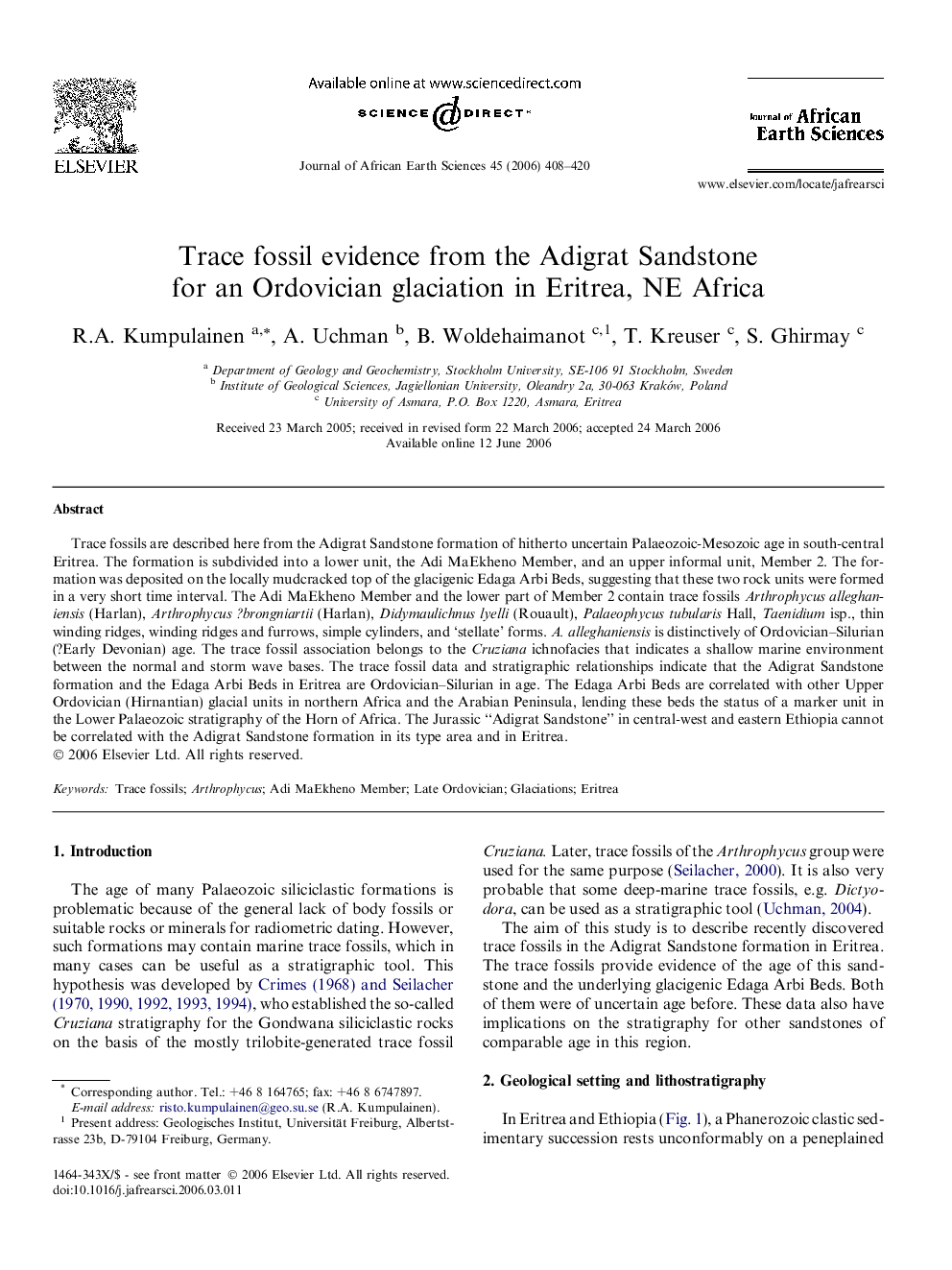| Article ID | Journal | Published Year | Pages | File Type |
|---|---|---|---|---|
| 4729777 | Journal of African Earth Sciences | 2006 | 13 Pages |
Trace fossils are described here from the Adigrat Sandstone formation of hitherto uncertain Palaeozoic-Mesozoic age in south-central Eritrea. The formation is subdivided into a lower unit, the Adi MaEkheno Member, and an upper informal unit, Member 2. The formation was deposited on the locally mudcracked top of the glacigenic Edaga Arbi Beds, suggesting that these two rock units were formed in a very short time interval. The Adi MaEkheno Member and the lower part of Member 2 contain trace fossils Arthrophycus alleghaniensis (Harlan), Arthrophycus ?brongniartii (Harlan), Didymaulichnus lyelli (Rouault), Palaeophycus tubularis Hall, Taenidium isp., thin winding ridges, winding ridges and furrows, simple cylinders, and ‘stellate’ forms. A. alleghaniensis is distinctively of Ordovician–Silurian (?Early Devonian) age. The trace fossil association belongs to the Cruziana ichnofacies that indicates a shallow marine environment between the normal and storm wave bases. The trace fossil data and stratigraphic relationships indicate that the Adigrat Sandstone formation and the Edaga Arbi Beds in Eritrea are Ordovician–Silurian in age. The Edaga Arbi Beds are correlated with other Upper Ordovician (Hirnantian) glacial units in northern Africa and the Arabian Peninsula, lending these beds the status of a marker unit in the Lower Palaeozoic stratigraphy of the Horn of Africa. The Jurassic “Adigrat Sandstone” in central-west and eastern Ethiopia cannot be correlated with the Adigrat Sandstone formation in its type area and in Eritrea.
